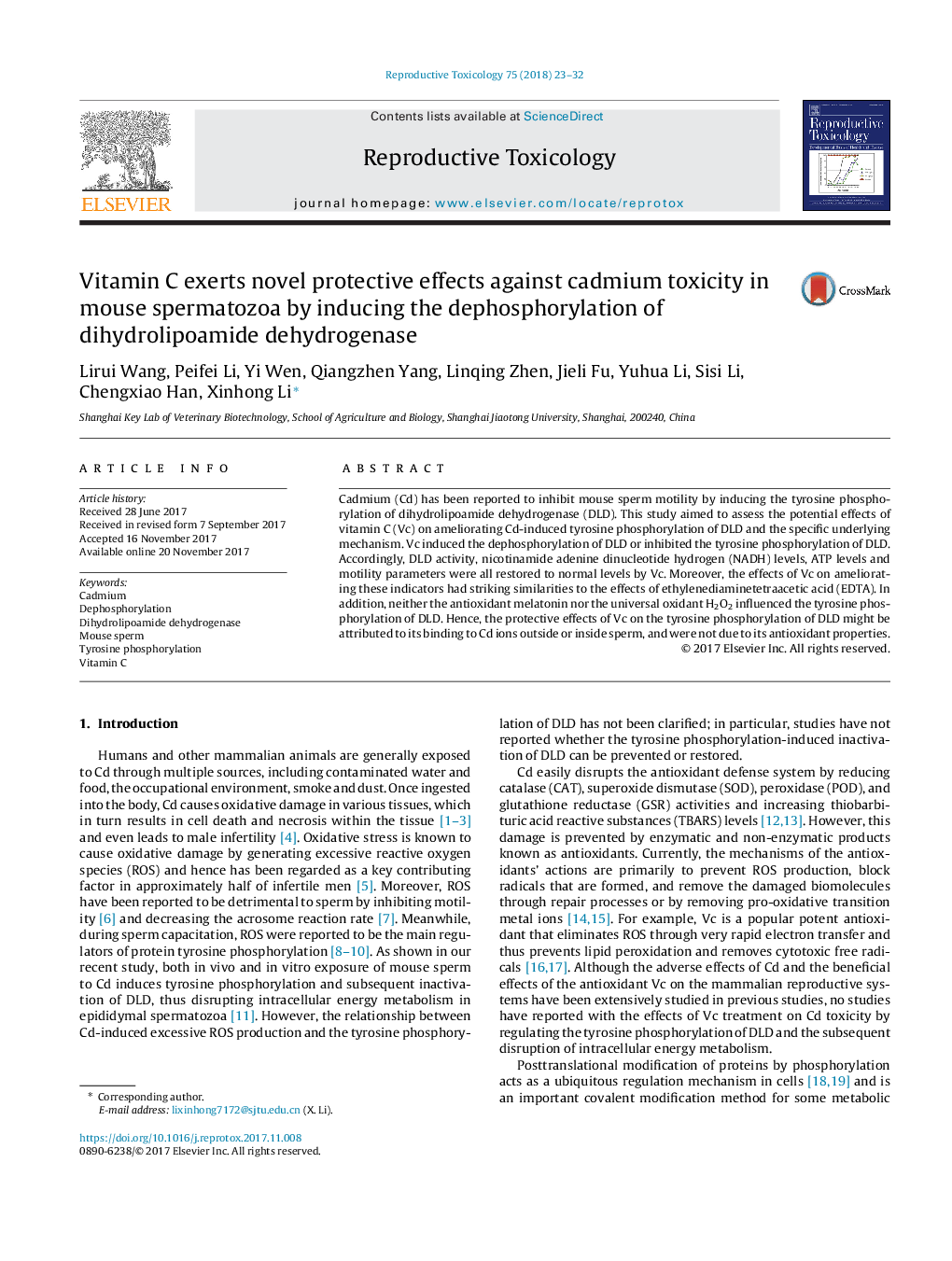| Article ID | Journal | Published Year | Pages | File Type |
|---|---|---|---|---|
| 8552422 | Reproductive Toxicology | 2018 | 10 Pages |
Abstract
Cadmium (Cd) has been reported to inhibit mouse sperm motility by inducing the tyrosine phosphorylation of dihydrolipoamide dehydrogenase (DLD). This study aimed to assess the potential effects of vitamin C (Vc) on ameliorating Cd-induced tyrosine phosphorylation of DLD and the specific underlying mechanism. Vc induced the dephosphorylation of DLD or inhibited the tyrosine phosphorylation of DLD. Accordingly, DLD activity, nicotinamide adenine dinucleotide hydrogen (NADH) levels, ATP levels and motility parameters were all restored to normal levels by Vc. Moreover, the effects of Vc on ameliorating these indicators had striking similarities to the effects of ethylenediaminetetraacetic acid (EDTA). In addition, neither the antioxidant melatonin nor the universal oxidant H2O2 influenced the tyrosine phosphorylation of DLD. Hence, the protective effects of Vc on the tyrosine phosphorylation of DLD might be attributed to its binding to Cd ions outside or inside sperm, and were not due to its antioxidant properties.
Keywords
Related Topics
Life Sciences
Environmental Science
Health, Toxicology and Mutagenesis
Authors
Lirui Wang, Peifei Li, Yi Wen, Qiangzhen Yang, Linqing Zhen, Jieli Fu, Yuhua Li, Sisi Li, Chengxiao Han, Xinhong Li,
